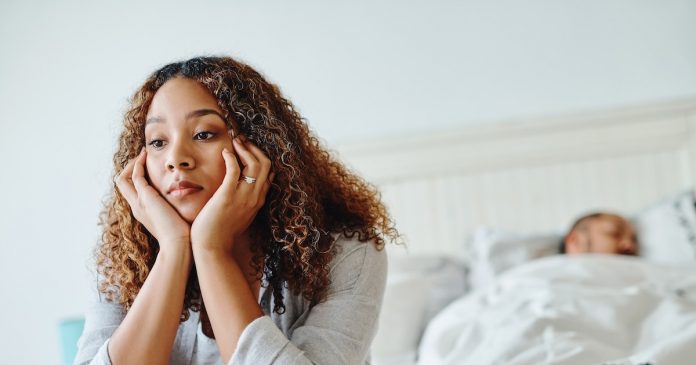Here’s how to tap into female desire with science.
A discrepancy in sexual desire is one of the most common relationship problems that couples have.
Men regularly have spontaneous sexual desire, which seems to appear out of the blue.
Women, however, are more likely to experience responsive desire after being turned on by some stimuli.
That look—I know that look well. The furrowed brow, the sense of holding back tears, a slight downward tilt of the head: that look on a female client’s face when she tells me, “Never. I never really feel like having sex with my husband. I feel broken. I love him; I just never feel like doing it.”
Science tells us she’s normal. They’re all normal, all of the female clients who sit before me and shamefully tell me this. It’s not that they don’t have any sexual desire; they just don’t realize that they have a different kind of desire, and therein lies the key to a better sex life.
The truth is 70 percent of women hardly ever want sex out of the blue. But this isn’t the only way to want sex.
Spontaneous versus responsive sexual desire
“Spontaneous desire” can be thought of as the feeling that you get when you randomly, out of the blue, want sex. It is what most of us traditionally view as being horny, randy, hot to trot—whatever you want to call it. Seventy-five percent of men primarily experience desire in this way. However, most women are different. For most women, sexual arousal actually precedes the feeling of sexual desire; women’s desire is primarily “responsive desire,” meaning sexual desire that occurs in response to sexual arousal or sexual stimuli.
This means that to experience sexual desire (especially in the context of a long-term relationship), most women have to be “turned on” in some way first. Let me say that again—for women, most often, arousal comes first, and desire comes after.
Given that much of our ideas about sexuality are based on the “male as default,” women expect their sexual desire to be just like the average man’s. To be laying in bed after a long day of work and childcare and still experience the spontaneous desire to have sex. They think there is something wrong with them when they don’t.
But there isn’t. Having primarily responsive desire, women need the right context to get into the mood. Most women need two things before their sexual desire can come online: (1) low stress and (2) erotic sensation (touch, visual, or auditory).
Stress: The ultimate libido-killer
You may have noticed that you have the best sex when you are on vacation, and you wonder, “Why can’t this happen all the time?!”
This makes more sense when we think about the fact that we have two competing parts of our nervous systems: the parasympathetic “rest-and-digest” branch and the sympathetic “fight-or-flight” branch. When our “fight-or-flight” branch is activated, the body reacts in ways that prepare for fighting off or running away from a predator, and the “rest-and-digest” branch, responsible for bringing relaxation to the nervous system, is deactivated. Non-urgent functions such as digestion and sex are halted in lieu of responses to run away or fight threats to our immediate survival. It’s hard to want to have sex when your body feels that there is a lion chasing you!
Stress can come in many forms. For example, concerns about the relationship, the grocery list, body image, sexual performance, whether the experienced level of desire is “normal,” etc., can all create stress. Thus, stress makes more stress, and a wicked cycle ensues whereby stress about one’s desire reduces desire in itself. Given that humans, especially women, need to be in a safe context where the parasympathetic branch of their nervous systems is activated in order to experience desire, our modern, busy, and stress-filled lifestyles are killing desire.
Use sensation to activate responsive desire.
It’s normal for women to need a little “warming up” before experiencing the desire to have sex. For example, a woman might be watching a movie, and a steamy sex scene comes on, and she’s turned on. Or, when she goes to bed at night, and her partner turns over and kisses her, she doesn’t immediately feel like taking it all the way but starts to feel the desire as that make-out session progresses. Again, arousal precedes desire in many cases, especially for women.
You can use erotic sensation to turn on desire no matter what desire style you have. If you’re a woman wanting to have more sex but not experiencing spontaneous desire, you may want to try allowing yourself to fully immerse yourself in foreplay and see if your responsive desire comes online. If you’re a man feeling frustrated by your partner’s seeming lack of desire, try asking for consent to sensually touch her in ways that build up to the “main event” to activate her responsive desire.
When I tell the female clients in my practice about responsive desire, I often get a look. Widened eyes, a slight smile. They finally know there is nothing wrong with them, and they know a better sex life can be on their horizon. It just takes a little foreplay first.




























